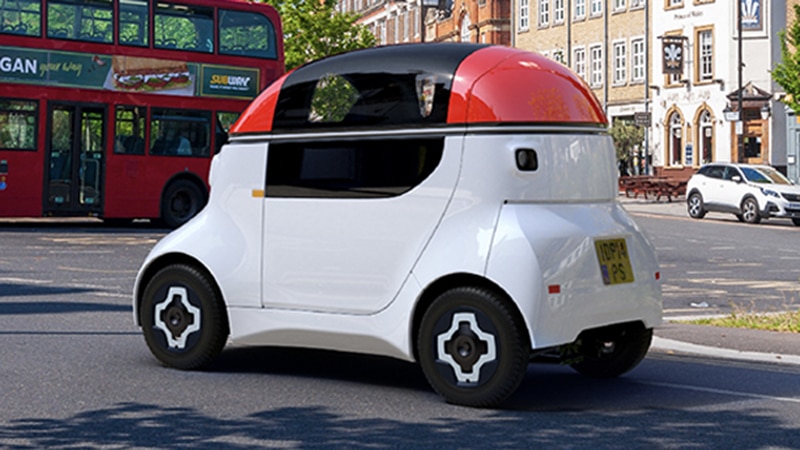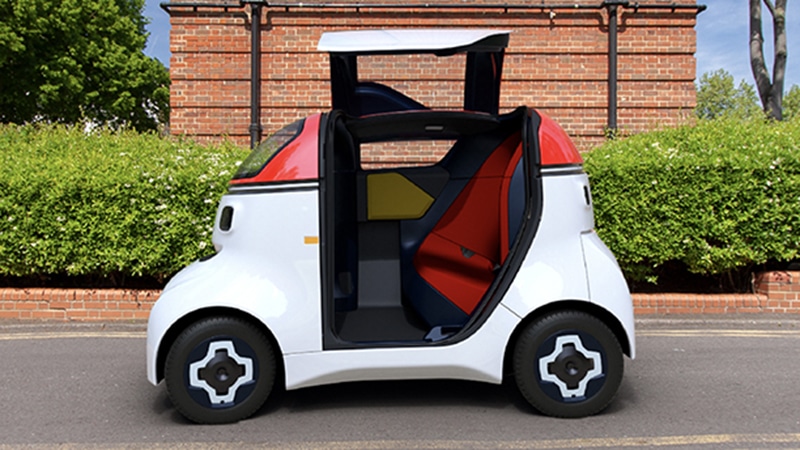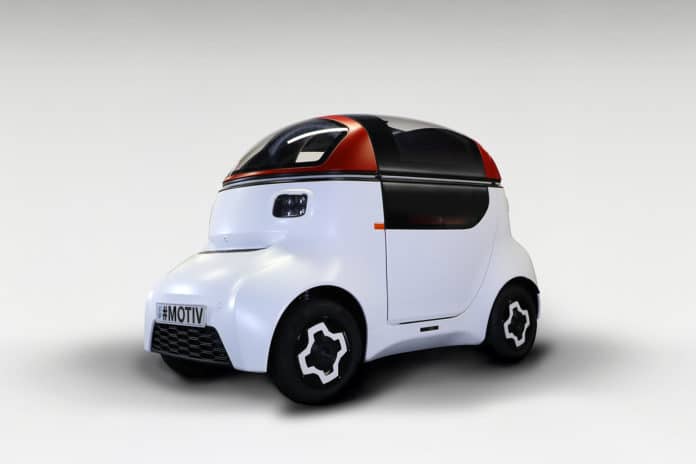The problem of urban mobility is deeply felt, and more and more companies are proposing different solutions, concepts such as the Cruise Origin self-driving minibus. Now, Gordon Murray Design has unveiled an autonomous and electric quadricycle designed to solve the problem of urban traffic and to offer very high safety standards.
Called ‘MOTIV,’ this ultra-compact, autonomously driving city car with an electric drive was created together with the partners Delta Motorsport and itMoves and will be presented at the Mobility Re-imagined show (on 11-12 February 2020) in London.
Compared to similar projects, this particular single-seater ‘pod’ offers significant savings on construction costs thanks to Murray’s patented “iStream Superlight” technology. The patented iStream aluminum chassis structure is also designed to ensure crash safety at the highest level.

It is ultra-compact, with a length of 2.54 meters, a width of 1.31 meters, and a height of 1.63 meters. Only the roof, a small pane in the front, and strips in the flanks are glazed. The 13-inch wheels are placed far in the corners. Access to the single-seat interior is provided by a swing door that swings open to the side and extends to the vehicle floor.
Despite its small size, MOTIV has been designed to offer maximum comfort onboard. The onboard controls have been placed to take up as little space as possible. The central 24-inch display and the lack of a steering wheel highlight the fact that the vehicle is autonomous. Optionally, MOTIV can also be used as a transport box without a seat, with over 1,100 liters of cargo space.

The powertrain is composed of a 20 kW electric motor combined with a 17.3 kWh liquid-cooled battery pack providing a potential range of up to 100km (62 miles). The MOTIV is equipped with CCS charging capability, which enables the battery to be recharged from 20% to 80% battery in just 40 minutes.
The electric quadricycle, which weighs around 450 kg without a battery, should be able to accelerate from zero to 62 km/h (38 mph) in 7.5 seconds. The top speed is given as 65kp/h (40mph). Equipped with numerous sensors and radar systems, the MOTIV can also move through traffic completely autonomously. If the MOTIV is directed by a driver, a driver’s license for class L7e, according to which the MOTIV is classified, is sufficient.
The consortium behind this project is looking for partners in the autonomous driving sector to start real tests before the mass production of the vehicle, which should take place in about 2-5 years. Obviously, MOTIV will not be able to solve traffic problems on its own but will have to be widely adopted by the mobility service providers.
